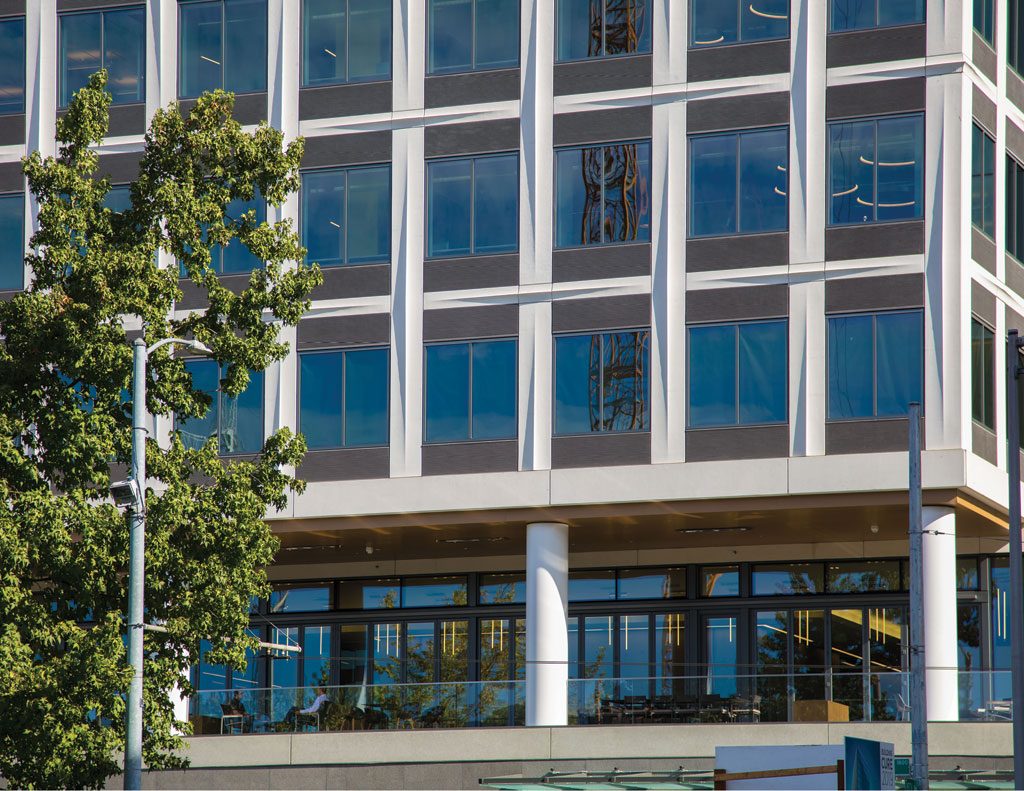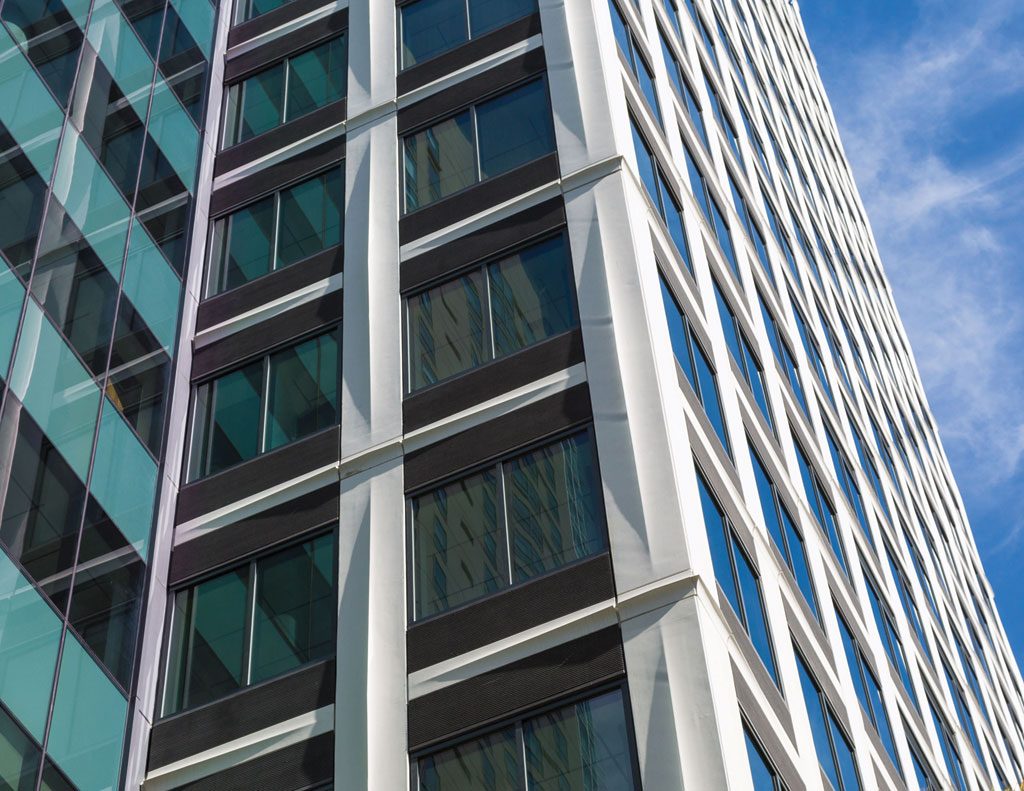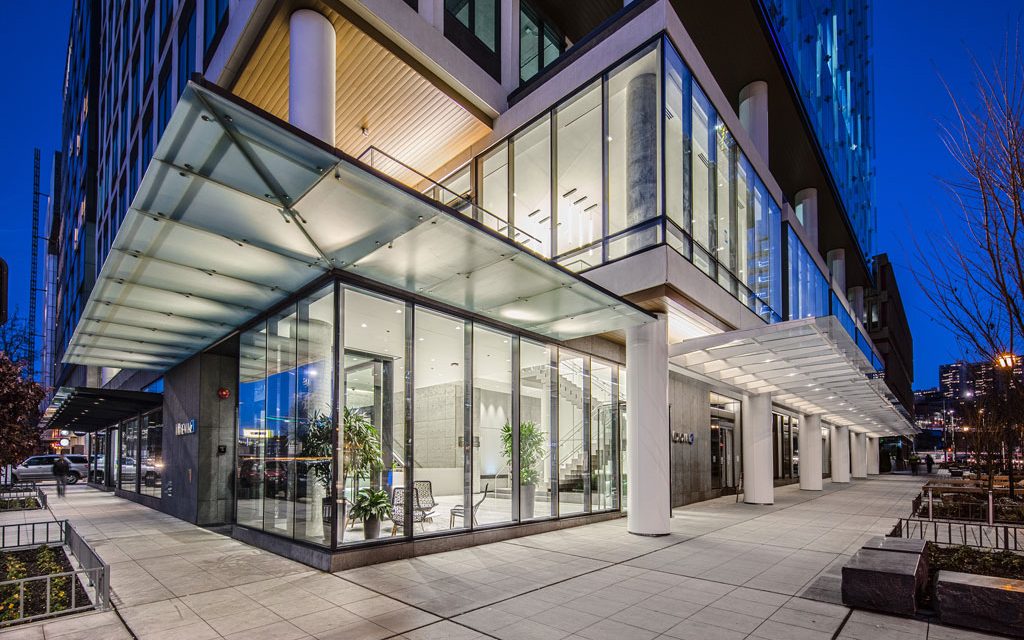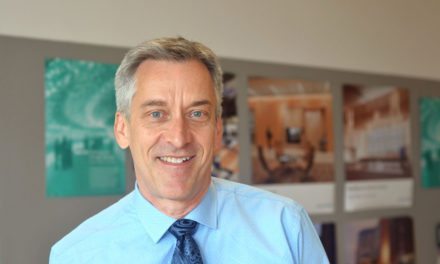The Midtown21 Office Building, designed by LMN Architects, reimagines the office tower typology to accommodate a new generation of tenants in the tech sector, focusing on flexibility and interactivity. The 21-story, 365,000-square-foot, Class A office tower commands a vibrant street corner in Seattle’s rapidly transforming Denny Triangle district, setting a precedent for sustainable, civic-oriented design on a city-designated “Green Street.”
Denny Triangle connects downtown Seattle with the emerging, tech-dominated South Lake Union district, driving a need for new thinking about high-rises that meet the unique needs and values of today’s tech companies. “Green Street, wide sidewalks, amenities, street-level retail – Midtown21 shows how a tall building can be a great neighbor,“ said Walt Niehoff, AIA, Principal-in-charge, LMN Architects.
Expressing the interweaving of multiple urban neighborhoods, the façade features a pattern of digitally fabricated, precast concrete spandrels resembling a woven net, which creates dynamic patterns of light and shadow throughout the day. Office floor heights of 10 feet – expandable to 12 feet by removing the acoustical ceiling tiles – translate the voluminous feel of industrial loft buildings traditionally preferred by tech tenants to a vertical tower condition. The high ceilings are ideal for daylight penetration into the floor plate, with dramatic views of the surrounding city.

The 54 panel types were able to be reduced to 5 shaping types by simply adding flat sections to the formwork where additional length was needed to accommodate varying building dimensions. Photo credit: Michael Walmsley
Precast concrete was selected as an alternative to spandrel glass and steel construction for its durability, sculptural possibilities and cost efficiency. Overall, 1,304 architectural solid precast panels cover approximately 73,000 square feet and fill a variety of roles:
• Narrow & vertical (spanning up to two stories)
• Horizontal and spandrel (with approximately 3-feet return)
• Corner column covers
• Large, rectangular
Some panels combined two concrete face color mixes and formliner surface textures with light sandblast finishing to reduce the overall number of precast pieces required and allow for a faster installation schedule. “We developed an aesthetic that took advantage of a larger panel size capable of spanning multiple stories, while still retaining a fine-grained, textured composition. Parametric modeling allowed us to iteratively study and adapt the sculpted geometry over the entire façade, as well as rapidly provide the contractor with quantities and area takeoffs for costing exercises,” explained Walt Niehoff, AIA, Principal-in-charge, LMN Architects.

The selected panel shaping helps to limit the appearance of joints between panels while also creating a distinct visual pattern. Photo credit: Michael Walmsley
LMN Architects worked with the precast contractor to develop an efficient kit of form-liner parts that could be adjusted to create the overall design. These opaque materials promoted the building’s energy performance, helping it to achieve LEED Gold certification as one of the first high-rises in Seattle to meet the city’s stringent new energy code.
Project team
LMN Architects (Architect)
APS Architectural Precast Structures Ltd. (Precast Concrete Producer)
Trammell Crow Company (Owner)
Balfour Beatty Construction dba Howard S. Wright (General Contractor)
APS Architectural Precast Structures Ltd. (Precast Concrete Specialty Engineer)
Magnusson Klemencic Associates (MKA) (Structural Engineer of Record)
The Erection Company, Inc. (PCI Certified Erectors)
Spec Formliners, Inc. (Precast Formliner Manufacturer using CAMWorks software)
Photography
Michael Walmsley




